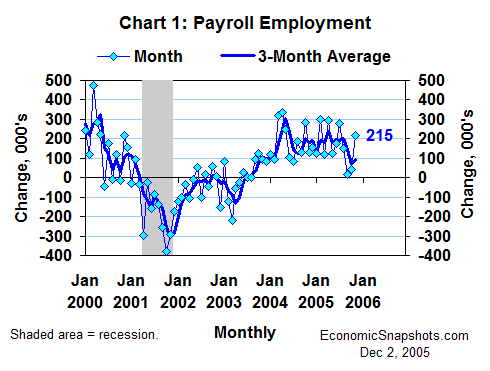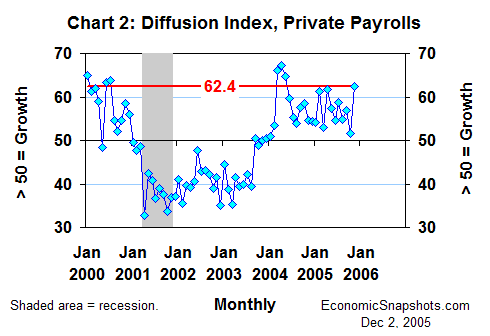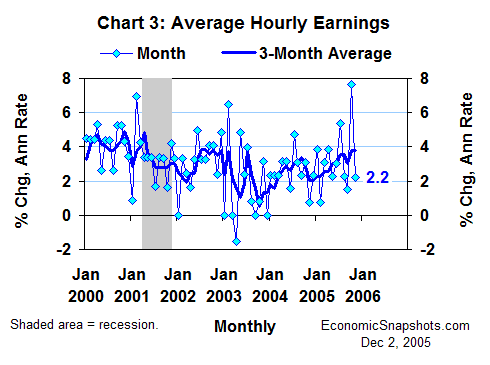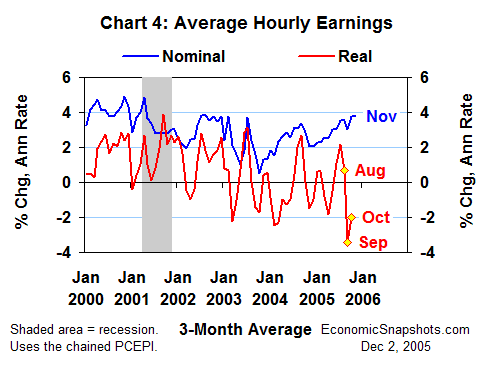
| Back to Index |
December 2, 2005 – U.S. payroll employment rose by 215K in November (Chart 1) after a revised 44K October increase (originally +56K). Revisions added 13K to the prior two months’ payroll growth.

The one-month payroll diffusion index shot up by 10.8 index points to 62.4 in November – an indication that November’s job gains were broadly based (Chart 2).

Payroll growth had been trending at roughly 200K per month before Hurricane Katrina struck. Growth vanished in September – a development that could be traced directly to hurricane effects. The continuing weakness in October was not as easily explained. But, now, it looks like job growth resumed its pre-Katrina trend in November.
Average hourly earnings rose at a 2.2% annual rate in November, extending October’s 7.7% leap (Chart 3). For the three months through November, hourly earnings rose at a 3.8% average annual rate, matching October’s three-month gain.

As of October, however, the three-month average trend in CPI growth was running at an 8% annual rate, suggesting an average real earnings decline of about 4% per month for the three months through October.
Alternatively, the chained price index for personal consumption expenditures (the chained PCEPI) rose at a 6% annual rate in the three months through October, yielding an average real hourly earnings decline of about 2% per month (Chart 4). [1]

By either yardstick, real hourly earnings were hit hard by the September run up in energy prices and had yet to recover from that loss in October.
The unemployment rate was unchanged at 5% in November – still running slightly below the Congressional Budget Office’s estimate of its “full employment” level.
The November labor force participation rate was unchanged at 66.1% – still unusually depressed. This low labor force participation rate continues to suggest that the unemployment rate may be currently understating the economy’s untapped labor resources.
Suzanne Rizzo